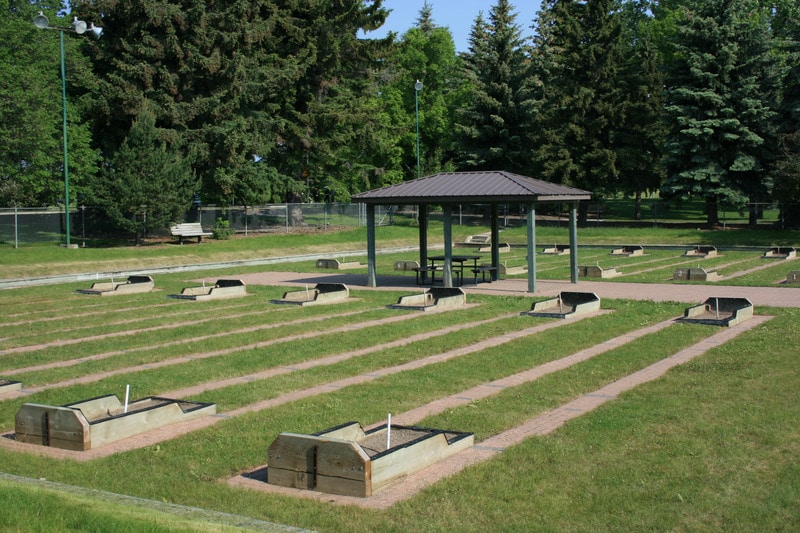Horseshoe pit construction is a popular outdoor recreational activity enjoyed by people of all ages. It’s a simple yet engaging game that brings friends and family together for hours of fun. Whether you’re looking to install a horseshoe pit in your backyard or on a larger scale, like a sport court in South Florida, there are various challenges you’ll need to overcome to ensure a successful construction project. In this article, we’ll delve into the key challenges faced during horseshoe pit construction, particularly in the context of South Florida’s unique climate and terrain.
Site Selection And Preparation
The first and foremost challenge in horseshoe pit construction is selecting the appropriate site and preparing it correctly. Whether it’s a residential backyard or a sport court in South Florida, the chosen location should have enough space and meet specific criteria. Here are some challenges to consider:
Space Constraints: In densely populated areas like South Florida, finding enough space for a horseshoe pit can be a challenge. You need adequate room for the pit itself, the approach areas, and safety zones.
Soil Type: The soil type in South Florida can vary significantly, from sandy soils to mucky soils in low-lying areas. The challenge is to ensure proper drainage and stability for the horseshoe pit foundation.
Level Ground: Achieving a level playing surface is crucial for fair gameplay. This can be particularly challenging in areas with sloped terrain, requiring earthmoving and grading.
Permits and Regulations: Depending on your location, there might be zoning regulations and permit requirements for constructing recreational facilities like horseshoe pits. Complying with these regulations is essential but can be a challenge.
Horseshoe Pit Design And Dimensions
The design and dimensions of the horseshoe pit play a crucial role in the game’s fairness and enjoyment. Challenges related to the design and dimensions include:
Pit Size and Shape: Traditional horseshoe pits are rectangular and 6 feet by 48 feet in size, with stakes placed 40 feet apart. Ensuring these dimensions accurately can be challenging, especially if the available space is limited or irregularly shaped.
Stake Placement: The challenge is to precisely place the stakes at the correct distance from each other and at the right angle. Proper stake placement is essential for competitive play.
Material Selection: Selecting the right materials for the pit, such as the sand or clay mix, is crucial. South Florida’s climate can pose challenges, as heavy rain can affect the pit’s consistency.
Drainage: Given South Florida’s frequent rain and tropical storms, ensuring proper drainage for the pit is essential to prevent waterlogging and maintain a playable surface.
Material Sourcing And Transportation
The availability and transportation of materials needed for horseshoe pit construction can present additional challenges:
Sand Quality: The sand used in horseshoe pits should be of the right texture and consistency. Finding the ideal sand type in South Florida can be a challenge, and transporting it to the construction site may add to the cost.
Stakes and Accessories: Sourcing the horseshoe stakes and accessories, such as horseshoes themselves, can be a challenge, especially if you’re looking for high-quality, durable options.
Transport Logistics: Transporting heavy materials and equipment to the construction site, particularly in South Florida’s urban areas with congested traffic, can be logistically challenging.
Environmental Considerations
Respecting the environment and adhering to sustainability practices during horseshoe pit construction is becoming increasingly important. In South Florida, where ecosystems are delicate, these challenges are even more pronounced:
Erosion Control: South Florida’s heavy rains can lead to soil erosion, which may affect the stability of the pit’s foundation. Implementing effective erosion control measures is essential.
Wildlife Preservation: The region is home to diverse wildlife. Ensuring that the construction process minimizes disruption to local ecosystems can be challenging but is crucial for environmental conservation.
Water Conservation: Given South Florida’s water scarcity concerns, efficient water management during construction is essential. It can be a challenge to strike the right balance between water use and maintaining a playable surface.
Climate And Maintenance
South Florida’s climate presents unique challenges in terms of maintaining horseshoe pits:
Heat and Sun: The scorching South Florida sun can be hard on materials and affect player comfort. Selecting materials and designs that can withstand prolonged exposure to heat is vital.
Rain and Humidity: Heavy rain, high humidity, and occasional tropical storms are common in South Florida. These weather conditions can pose maintenance challenges, such as keeping the pit dry and free from water pooling.
Mold and Algae Growth: High humidity levels can lead to mold and algae growth on the playing surface. Regular maintenance is needed to prevent these issues.
Conclusion
Constructing a horseshoe pit, whether in a residential backyard or as part of a larger Sport Court South Florida, involves overcoming various challenges. These challenges encompass site selection, design, materials, environmental considerations, and climate-related issues. However, with careful planning, attention to detail, and a commitment to sustainability, you can successfully navigate these challenges and create a horseshoe pit that provides countless hours of enjoyment for years to come.





